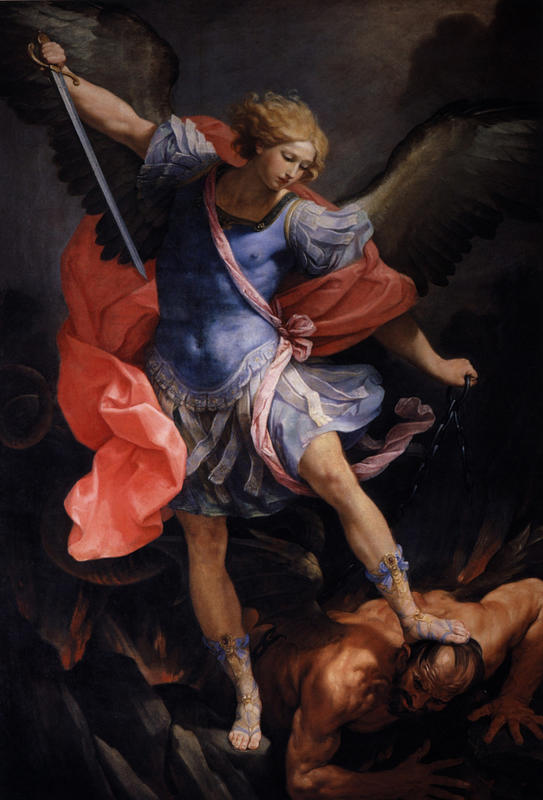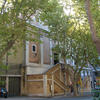More about The Archangel Michael Defeating Satan

Contributor
Guido Reni's St. Michael the Archangel, portrays the angel who, according to his first attestations in the oral and written Torahs, protects the children of Israel, looking like a Roman deity.
According to Roman Catholic interpretations, he protects the Church. Scholars write that the devilish villain of the painting bears the face of the Cardinal Pamphilj, later Pope Innocent X, because he criticized Reni's artwork. Reni's angel, who appears in the book of Daniel, is helping him out with a personal issue.
According to the oral Torah, the character played, unwillingly, by Pope Innocent X is actually the yetzer ha-ra, the part of us that just can't seem to find self-control, and eats all the cookies in the sleeve, fights with our loved ones over petty things, and worse. Michael overcomes this inclination by giving us memory of scripture, according to the African Rabbi Ha-ARI HaKadosh, who compiled a number of prayers still in use today. Michael's name has three syllables, and if you overhear Ashkenazi Jews saying his name, they'll call him "Michoy'l." Angels are somewhat controversial in Judaism, because they are messengers between humans and the Divine, and some generations worshipped them directly, like superfans bribing a roadie for a peek at Bieber. In the Abrahamic faiths, people generally do not worship angels, but they do order them around in prayers.
In Christianity and Islam, the discussion of Michael is much more widespread. For Catholics, images of angels like this one are for contemplation and meditation, not worship per se. "Worship" is not a very neatly-defined word in today's culture—we say things like "he worships that football team," without really thinking about it. Nathaniel Hawthorne loved this painting so much that he wrote a romance, The Marble Faun, about it. The people who first recorded the name of the Archangel Michael probably wouldn't have thought to make an image of him, for a number of reasons, but Christians knew a good opportunity when they saw one.
Sources
- "Ayah: 97." Quran.com, https://quran.com/2/97-98.
- Berzon, R. Azaryah. "Parsha & Hashkafa for Tetzaveh: Moshe & Mordechai, Amalek and the angel Michael, the acceptance of the Torah SheBalPeh." Feb. 12, 2019, YUTorah Online, https://www.yutorah.org/lectures/lecture.cfm/917850/rabbi-azarya-berzon…
- Bryant, Lorinda Munson. What Pictures to See in Europe in One Summer. New York: John Lane, 1910.
- Dryden, John. Select Essays on the Belles Lettres: By Mr. Dryden. Glasgow: Robert Urie, 1750.
- Goske, Daniel. "Dark Satyrs, White Enthusiasts: Hawthorne's and Melville's Variations on "St. Michael and the Dragon." The Princeton University Library Chronicle 54, No. 2/3 (Winter-Spring 1993): 207-224.
- Killikelly, Sarah Hutchins. Curious Questions in History, Literature, Art, and Social Life: Designed as a Manual of General Information, Volume 2. Pittsburgh: Eichbaum, 1895.
- Mizrahi, Maurice. "Angels in Judaism." Oct. 12, 2013, YouTube Video, https://youtu.be/mlel7osbD5k.












Comments (1)